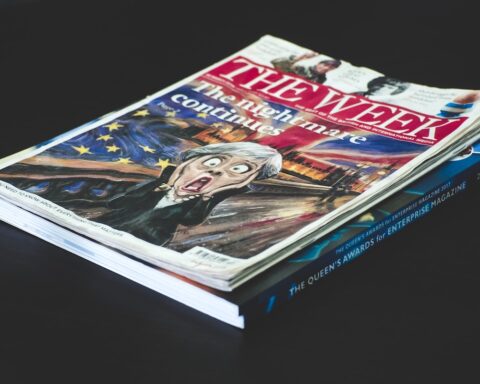The world rang in 2022 not too long ago, and while most people are still working hard on their new year resolutions, some others are enjoying the creative works that were released on January 1, also known as Public Domain Day – the day when the public is gifted with copyright-free works – published works that fall out of copyright and enter the treasure trove of works of expressions that is known as the public domain.
The public domain is the raw material from which we make new knowledge and create new cultural works. Having a healthy and thriving public domain is essential to the social and economic well-being of our societies. No permission is needed to copy or use public domain works. A work is generally considered to be within the public sphere if it is ineligible for copyright protection or its copyright has expired, and can be quoted extensively.
Much of the world’s knowledge – Newton’s Laws of Motion, the paintings of Leonardo – is in the public domain. Society constantly reuses, reinterprets and reproduces material in the public domain and, by doing so, develops new ideas and creates new works. New theories, inventions, cultural works, and the like are indebted to the knowledge and creativity of previous centuries.
Is the public domain the same in every country?
To understand how the public domain works, we first need to understand what copyrighted materials are and the duration in which they are copyright protected. Copyright laws differ from country to country. Hence what enters the public domain depends on the respective country’s copyright regulations.
In the United States, copyrights owned by an author generally last for 70 years after the death of the author, while a corporation’s copyright lasts 120 years from creation or 95 years from publication, whichever expires first. Most countries in the European Union have a copyright term of 70 years after the creator’s death. This is with the exception of Spain, which has a copyright term of life plus 80 years for creators that died before 1987).
In Australia, the copyright term for standard works is the creator’s lifetime plus 70 years, an increase from 50 years during a change in copyright laws in 2004. In Asia, this varies too. Take Singapore, for example, its copyright term for standard works is the creator’s lifetime plus 70 years, same as the United States and most parts of Europe. In China, however, the copyright term for standard works is the creator’s lifetime plus 50 years.
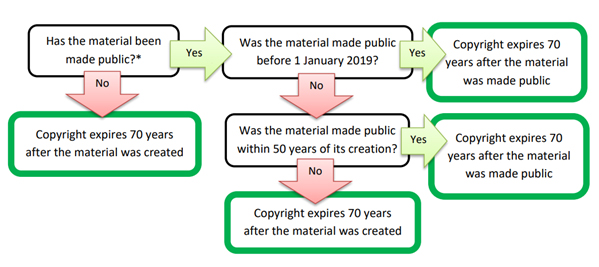
Source: Australia Libraries and Archives Copyright Coalition
As we can see, the copyright term in most countries is mostly between 50 and 70 years after the death of the creator. In some countries, it can be shorter. For instance, Yemen has a shorter copyright duration of the creator’s lifetime plus 30 years.
Copyrighted works and permission
Works that are not in the public domain are copyrighted works and are unfortunately not free for all to copy, share and build upon. For example, J. K. Rowling sold the film rights of some of her Harry Potter books to Warner Bros, who now owns the copyright in the Harry Potter films. When video games developer Electronic Arts wanted to create Harry Potter, the video game using the characters and settings from the film, they had to obtain permission from the licensing department at Warner Bros, who then earns royalties from the sales of the games.
The Harry Potter character is made up of many elements, so the obtainment of this license would have been a complex rights and financial negotiation which likely involved millions of dollars. This amount was reported to be US$30 million.
Warner Bros also owns the copyright to Wonder Woman, a character from DC Comics, which Warner Bros had acquired in 1969. Wonder Woman was created in 1941, so presuming copyright law in the United States doesn’t change at present, the character will enter the public domain in 2036. By then, we might be able to write a Wonder Woman story infused with fragments of our own imagination and openly share it with the public. Such is the ideal environment with no or expired copyrights.
Gatekeeping and stalled time in the public domain
While we should be celebrating the copyright-free works of creativity, some entities would prefer to keep these works in the private sphere for as long as they could, claiming overdue rights on them for one likely reason – milking their cash cow for as long as they possibly can.
Under the 1909 federal copyright act in the United States, a copyright lasts for 28 years with one renewal of another 28 years. So when Walt Disney’s character Mickey Mouse premiered in the 1928 short cartoon Steamboat Willie, Mickey’s copyright should have expired in 1984 under the laws of that time.
But when Disney expanded into a global superpower and Mickey became a household name, Disney got protective of their famous mascot and lobbied congress to rewrite the copyright system in 1976 in order to hold on to Mickey a little longer. The terms were then extended from 56 to 75 years, stretching Mickey’s copyright protection to 2003. In 1998, a few years before Mickey was due to enter the public domain, Disney lobbied again, and copyright laws were extended further to 95 years.
All About The Copyright Term Extension Act 1998
Now, note that 1998 is an important year for the public domain because the Copyright Term Extension Act 1998, or informally “The Mickey Mouse Protection Act”, was enacted. Mickey’s journey to the public domain was then delayed… until 2023. While it was anticipated that Disney would resume their fight again in 2019, the deadline to lobby for another copyright law extension, Disney did not act. This would mean that Mickey will finally be freed into the public domain on 1 January 2024. Or at least he is expected to be.
However, anyone who wants to reproduce Mickey then should be aware that they can only use the original black and white Mickey from Steamboat Willie. Any later additions to the character, such as his white gloves, red shorts and yellow shoes, will still belong to Disney… at least for now.
Disney’s competitor, Looney Tunes, will have their characters Bugs Bunny, Daffy Duck, Elmer Fudd, and the rest join the public domain over the course of the 2030s. Imagine a rich pastiche of creative works we will be seeing then. Once again, if Disney hadn’t lobbied for copyright extension back in 1998, all these classic Looney Tunes characters would already be in the public domain today.
The extension of copyright terms from 75 to 95 years in 1998 effectively created a 20-year hiatus between the release of works from 1922 and those from 1923 into the American public domain, and we didn’t see published works of expression — including books, music, and films — move out of copyright protection and into the public domain until 2019.
In 2019, after the 20-year freeze, the release of copyright-free works was unprecedented, and its impact on culture and creativity could be huge. We have never seen such a mass entry into the public domain in the digital age after the last one in 1998.
A celebration of copyright-free works
Some of these characters are nearly 100 years old at this point; it seems unjust that their use should be limited to a single company after so long. While we may have to wait for the giant companies to release their tenacious grip on their cash cows, and we will very likely not even get to see recent works entering the public domain in our lifetime, we could, however, celebrate those works that are already in, and those that are due to enter the public domain.
It is exciting that every year on January 1, a plethora of works enter the public domain. Some of the works that entered the public domain in 2019 are Arthur Conan Doyle’s Our American Adventure, The Great American Novel by William Carlos Williams, Charlie Chaplin’s The Pilgrim, Harold Lloyd’s Safety Last!, Robert Frost’s Stopping by Woods on a Snowy Evening, Kahlil Gibran’s The Prophet, The Murder on the Links by Agatha Christie, and Aldous Huxley’s Antic Hay, just to name a few.
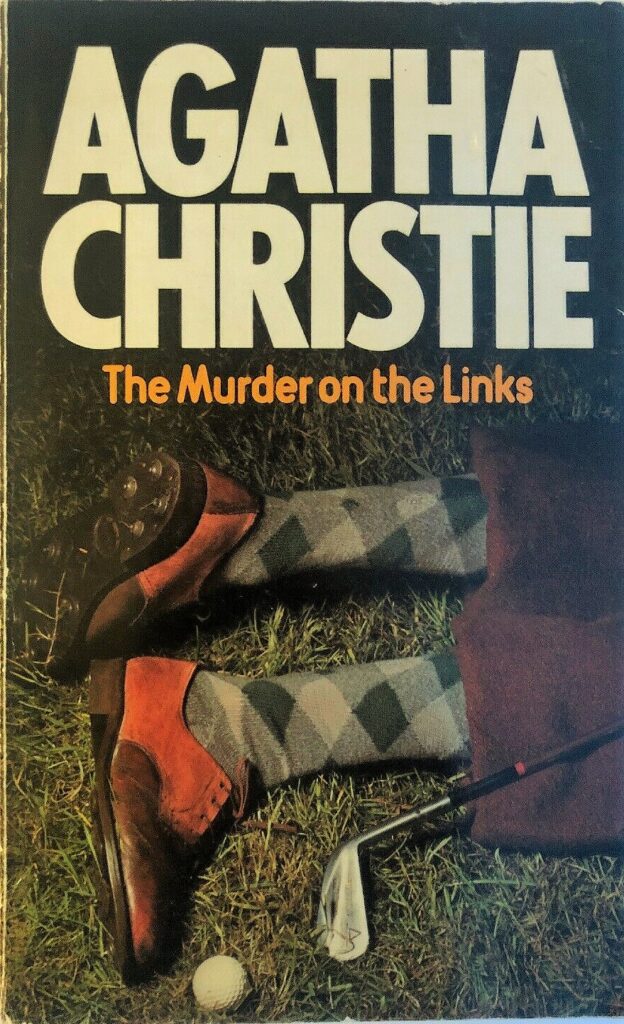
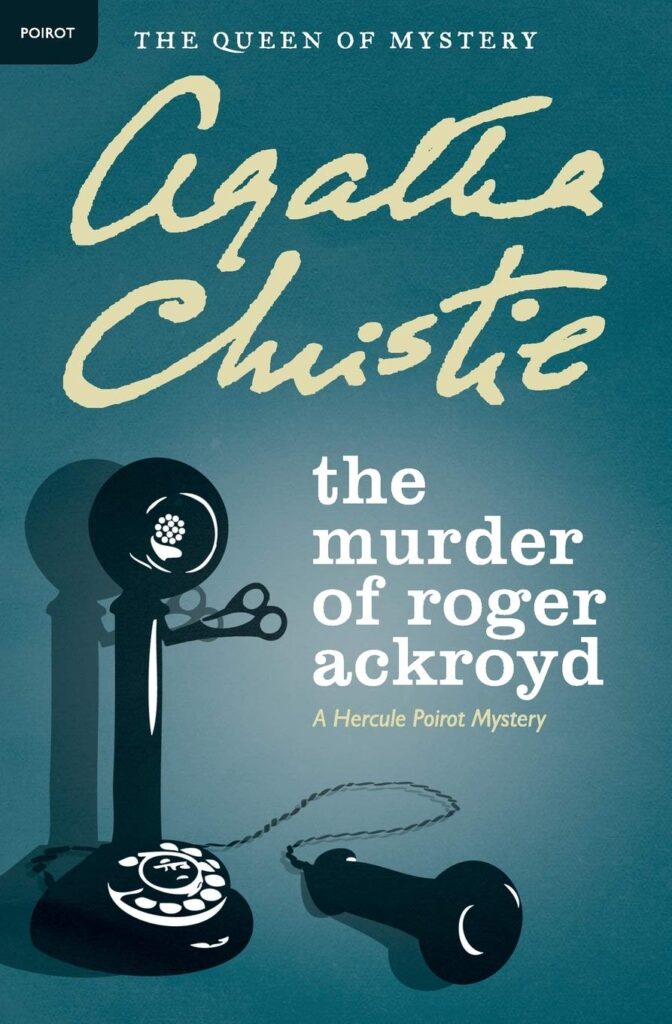
Works That Entered The Public Domain In 2020 & 2021
In 2020, works that were first published in 1924 or works by creators who died in 1949 entered the public domain. Some of these include the earliest sheet music for George Gershwin’s Rhapsody in Blue and Buster Keaton’s silent comedy film Sherlock Jr. In October 2020, satirical singer and songwriter Tom Lehrer announced the release of all of his lyrics and music to the public domain.
This would see his well-loved Masochism Tango and Pollution, among others, which have always been a source of inspiration in the musical and literary worlds, being used, reproduced, and expressed freely in individual creative works.
2021 was a fruitful year for the public domain, which saw the release of many works from 1925, including F. Scott Fitzgerald’s The Great Gatsby, Virginia Woolf’s Mrs. Dalloway, Harold Lloyd’s The Freshman, and works of many great musicians, including Fats Waller and Duke Ellington.
This year, the public domain had a field day as works published in 1926 were released from their copyright protection. This includes books such as A. A, Milne’s Winnie-the-Pooh, Felix Salten’s Bambi, Ernest Hemingway’s The Sun Also Rises, Agatha Christie’s The Murder of Roger Ackroyd, and Langston Hughes’ The Weary Blues. There are scores of silent films by Harold Lloyd, Buster Keaton and Greta Garbo, famous Broadway songs, and well-known jazz standards.
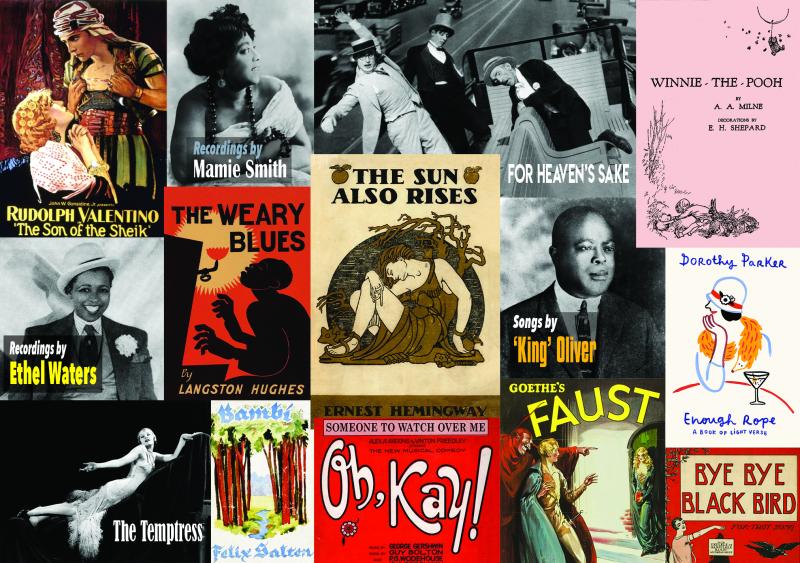
Source: The Center for the Study of the Public Domain at Duke Law School
More to come – Works that will fall into the public domain from 2023
Don’t get too excited, but these are what the public domain will welcome in the next two decades:
- Buck Rogers in 2023,
- Mickey Mouse in 2024,
- Popeye in 2024,
- Frankenstein (film) in 2026,
- Conan the Barbarian in 2027,
- King Kong in 2028,
- Donald Duck in 2029,
- Flash Gordon in 2029,
- Porky Pig in 2030,
- Daffy Duck in 2032,
- Snow White and the Seven Dwarfs (film) in 2032,
- Superman in 2033,
- The Hobbit in 2033,
- Batman in 2034,
- Captain Marvel (Shazam) in 2034,
- The Wizard of Oz (film) in 2034,
- Bugs Bunny in 2035,
- Tom and Jerry in 2035,
- Catwoman in 2035,
- The Joker in 2035,
- Wonder Woman in 2036,
- Captain America in 2036,
- Fantasia (film) in 2036, and
- Casablanca (film) in 2037
A treasure trove of creative works
As we know it, the public domain is a treasure trove! With such a huge array of works that can be used and reproduced freely, writers, musicians, filmmakers, painters, and just anyone can feed their creative muse and build upon these copyright-free works. Libraries, museums, historians, archivists, teachers, publishers, and database creators who rely on the public domain to collect valuable information, can teach future generations about the past. With the public domain, anyone can freely restore and digitize works published in 1926 (as of this year) and earlier.
The public domain is a gift for all of us. It is valuable because it is the place from which creative works of expressions are derived, used, reinterpreted, and reproduced to create social and cultural plurality.
In the digital age, the public domain has been more useful than ever. So on the next New Year’s Day, don’t just herald in the brand new year with renewed zest and resolutions, but do so together with the anticipation of a new list of valuable works that have been released into the public domain, and celebrate fair use in a more socially- and culturally-diverse environment that we live in.
Cover image by Will van Wingerden on Unsplash




